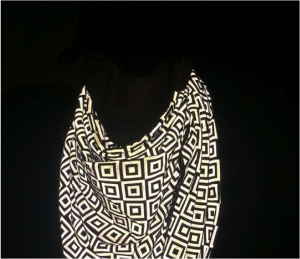 It seems as if we are headed for a showdown between privacy and security. I don’t think I have seen a time where there has been more conflict, and more acrimony, than the present day.
It seems as if we are headed for a showdown between privacy and security. I don’t think I have seen a time where there has been more conflict, and more acrimony, than the present day.
Let’s take a look at a few examples.
Earlier this month, the UK’s Telegraph newspaper ran a story that reported the BBC will send out specialized vans to determine if its customers are illegally accessing TV streams without paying a special license to do so. The story was later repudiated by The Register, but not after some sturm und drang across various social media and the BBC made it clear that it wasn’t scooping up traffic on home Wifi networks. That story reminded me of a Google snafu. Between 2007 and 2010, Google Street View cars tapped into the browsing histories, text messages and personal emails of people on unsecured WiFi networks. Street view cars haven’t gotten much love since then. Earlier this summer, an Oakland man was arrested near Google’s Mountain View HQ. He later admitted to bombing other Street View cars earlier this year. He said he did this because he thought Google was watching him, and “that made him upset.” Street View does capture some wacky stuff, and I will leave it to you to dig that up.
But Google isn’t the only place where you can invade someone’s privacy. Take the site Ready or Not. It was developed by UC Berkeley researchers and has an app that can track your physical movements thanks to your phone’s GPS and social media accounts that have location services enabled. You just type in a Twitter ID and you can bring up a map showing where that person has been lately. This is a lesson to turn off those services if you don’t need them: but the problem is many of our apps do require them, so you are left with annoying messages to turn them back on.
Then there was a mother in Houston, Texas who was horrified to learn hackers had compromised her home’s security camera system and put up a live feed of her two daughters’ bedroom online. It turns out one of her daughters accidentally opened up the virtual the door to a group of hackers when she decided to play Minecraft on an unprotected server. It was easy enough for the attackers to identify the IP address of the daughter’s iPad. From there, they made their way to the router and the connected home’s security cameras.
 Sometimes the tradeoffs between privacy and security can be a benefit for us. Progressive Insurance sells several billion dollars’ worth of auto insurance over the past several years. Customers agree to place a monitoring device called a Snapshot (pictured) in their cars in exchange for lower premiums. The device beeps when you are speeding or braking hard, and if you are driving after midnight.
Sometimes the tradeoffs between privacy and security can be a benefit for us. Progressive Insurance sells several billion dollars’ worth of auto insurance over the past several years. Customers agree to place a monitoring device called a Snapshot (pictured) in their cars in exchange for lower premiums. The device beeps when you are speeding or braking hard, and if you are driving after midnight.
 How about this scarf that can be used to hide your face and other features when you are out on the town and don’t want some flash-wielding paparazzi taking your picture? Its surface and pattern is specially designed to foil the camera’s exposure sensors.
How about this scarf that can be used to hide your face and other features when you are out on the town and don’t want some flash-wielding paparazzi taking your picture? Its surface and pattern is specially designed to foil the camera’s exposure sensors.
And then several years ago at the royal wedding of Prince William, British police arrested more than 50 protestors. What made this significant was that many of them were arrested before they actually did any acts of civil disobedience, recalling the pre-crime plot lines of the movie and Phil Dick story “Minority Report.” How did the cops locate these miscreants? Using social media posts, of course.
These are just a few examples of where the security/privacy debate is headed. I don’t have any ready answers for how this all going to shake out, but it certainly is going to make for additional conflicts as we struggle with finding the right balance.